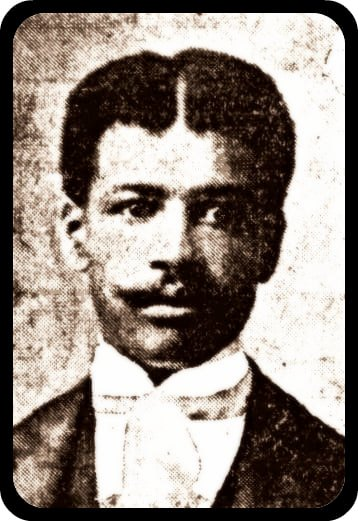Wilmont A. Barclay, a professional escape artist, mind reader, and hypnotist, was one of the most successful Black magicians of the early 20th Century. Barclay was born in St. Andrew Parish (now the Kingston and St. Andrew Corporation), Jamaica, West Indies, on February 28, 1877. He was also known as “Professor Maharajah,” a stage name that reflected the exoticism and mystique associated with his performances, and was often called “The King of Hypnotists.”
In 1895, Barclay allegedly taught Erik Weisz, the Hungarian illusionist who later became known as Harry Houdini, his first handcuffs, ropes, and packing case escapes during a joint performance at Austin and Stone’s Dime Museum in Boston, Massachusetts. Others, however, suggested that Houdini was taught the escape trick by Australian magician Lewis Paul during his visit to the United States in 1881. Even if Houdini had been under Barclay’s tutelage, this was the Jim Crow era in American history when few would have credited a Black magician, regardless of his talent, with training or influencing a white magician, particularly one of Houdini’s reputation. Nonetheless, by the beginning of the 20th Century, Barclay regularly toured Europe, building his reputation around famous escapes before bringing his acts to the United States.
On August 23, 1903, the New York Times printed an announcement that Barclay was the chief attraction at the Huber’s Museum, another dime museum on 14th Street in New York City. While his act was not subsequently described, Barclay successfully buried himself alive for hours in an act during the Friday night Amateur Show at the Bowdoin Square Museum in Boston, where he was assisted by fellow Jamaican Parker A. Johnson. He performed the same trick with Bostonian Catherine Beck as his assistant. Using the entire stage and accompanied by two of his two female assistants, he hypnotized Beck and buried her six feet underground, where she remained for two weeks. Three years later, in November 1906, Barclay made the London newspapers by placing his wife in a state of suspended animation and burying her six feet underground for 104 hours.
During the 1920s, Barclay worked with Rhadolph Marcellie, a well-known illusionist. Marcelle and his wife performed mental acts. Barclay accompanied them in their performances, presenting himself as Professor Maharajah. During one performance he engaged in fifteen illusions culminating in an escape from a milk can as his final act. Barclay continued to perform as an illusionist for many summer seasons in Luna Park on Coney Island, New York. He was also a frequent performer at Starlight Park along the Bronx River in the Bronx, New York City.
Interestingly, Barclay was astute enough to know that wearing a turban and the usage of the Asian title ‘Secrets of Mahatma” in his shows afforded him better opportunities for performances. He never denied his Jamaican heritage but he adopted the Asian persona professionally to avoid the bigotry of American audiences.
Wilmont A. Barclay died on July 14, 1944, in Brooklyn, New York. He was 67.
Do you find this information helpful? A small donation would help us keep this available to all. Forego a bottle of soda and donate its cost to us for the information you just learned, and feel good about helping to make it available to everyone.
BlackPast.org is a 501(c)(3) non-profit and our EIN is 26-1625373. Your donation is fully tax-deductible.
“Houdini’s teacher?” https://www.wildabouthoudini.com/2021/02/houdinis-teacher.html;
Jamy Ian Swiss, “Magical Heroes: The Lives and Legends of Great African American Magicians by Jim Magus,” https://www.vanishingincmagic.com/magic-book-reviews/magical-heroes-the-lives-and-legends-of-great-african-american-magicians;
“Wilmont A. Barclay (18??-193?),”Jamaica History, https://jamaica-history.weebly.com/prof-w-a-barclay.html

